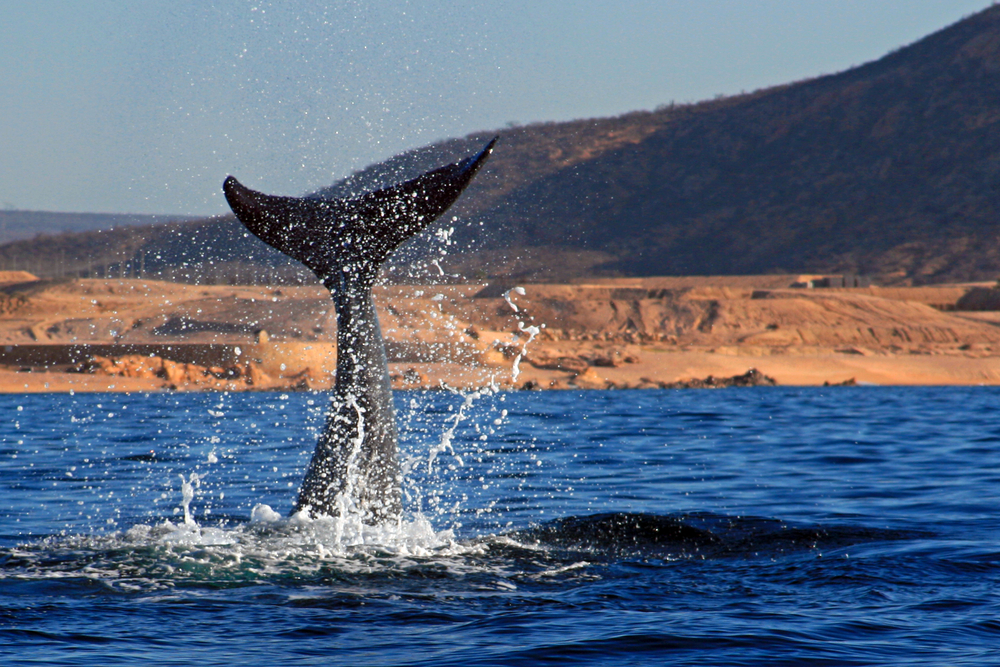

How We’re Helping Gray Whales Keep Their Homes
Imagine a 250-mile green lagoon of mangrove forests, the sound of migrating birds’ song filling the air. It’s rich with wildlife and a vibrant local culture, but there’s one thing in particular that makes this place extra special.
The Laguna San Ignacio on the Baja Peninsula in Mexico is both home and nursery to gray whales. These majestic but friendly whales from the baleen family live 50 to 75 years, and it all starts in this lagoon — although their migration will eventually take them as far north as Alaska during their lifetime. Their presence is one of the biggest tourist attractions in the region. Locals even call them the “friendly ones.”
If, like Jacques Cousteau said, this peninsula is “the world’s aquarium,” then gray whales are its star attraction. Yet, they haven’t been treated like stars; in fact, these special whales have been threatened and harmed by humans numerous times, and their battle for safety continues today.
A Troubled Past: The Gray Whale’s Long Fight for Survival
The gray whales of the lagoon have faced their fair share of troubles over the years. It all started in 1860, when captain Jared Poole brought the first whaling expedition to the lagoon. Hunting took its toll on the gentle giants of the lagoon. Humans hunted the Atlantic gray whales to extinction, while the Western Pacific gray whales were left critically endangered — with only 150 individuals remaining.
More than a century later, in 1995 the lagoon was threatened again: a salt work project was proposed for the area that would endanger the whales’ breeding grounds. Laguna San Ignacio is the last remaining, undisturbed gray whale breeding ground in the world. The shallow waters of the upper lagoon (perfect for whale birthing) and deeper waters in the lower lagoon, plus a lack of predators, make it an ideal spot for whales to raise their young.
Fortunately, hard-working and caring environmentalists and the local community fought against the salt work construction, and won. They saved the gray whales’ essential breeding grounds, securing the place where this beautiful species continues its legacy.
This battle wasn’t the end — it was just the beginning. The project resulted in the establishment of the Laguna San Ignacio Conservation Alliance in 2005. Today, the International Community Foundation (ICF) works with the Laguna San Ignacio Conservation Alliance, made up of local community leaders, foundations, researchers and experts, to help ensure gray whales can keep their home for years to come.
Staying Safe: Gray Whales Need Ongoing Support
Gray whales have come a long way since 1860. Shortly before the salt works debate, they were actually removed from the endangered list. This is a success, but it doesn’t mean we’re off the hook; it means we have to fight even harder to keep them from returning to the endangered list. Commercial construction, expansion of urban communities, water pollution, and other human projects could all quickly diminish the whales back into endangered numbers.
ICF and the Laguna San Ignacio Conservation Alliance have been working together with local authorities to ensure the entire lagoon, and specifically the gray whales, receive the permanent protection they need to survive and flourish.
We have secured over 340,000 acres of critical habitat land for conservation. Our efforts have successfully protected 150 miles of valuable coastline for public access and conservation, and we intend to do even more in the coming years.
Not only are we protecting the gray whales, we’re working to protect the local economy and population, as well. Whale watching guides, outfitters, and fishermen make up a major part of the local economy. By protecting gray whales and working with the nearby communities, we’re finding sustainable solutions for the whales and the people of the lagoon alike.
How You Can Help Protect the Whales
We set up the San Ignacio Lagoon Whale Conservation Fund in order to raise money to support these initiatives to keep gray whales off the endangered list, and keep the local community thriving.
The fight isn’t over. Urban sprawl and threats to water quality, among other things, continue to put the sacred breeding grounds for gray whales at risk. ICF and the Laguna San Ignacio Conservation Alliance need your help, if we are to continue the work in this region to support the local people and wildlife. If you’d like to make a difference, donate now to help keep the gray whale population afloat.
Join Our Mailing List
Stay Connected with ICF
Be the first to get exclusive updates on
what ICF is doing to make a difference!
